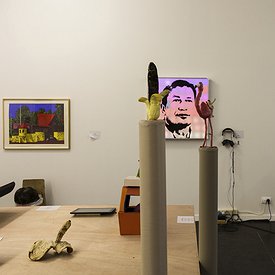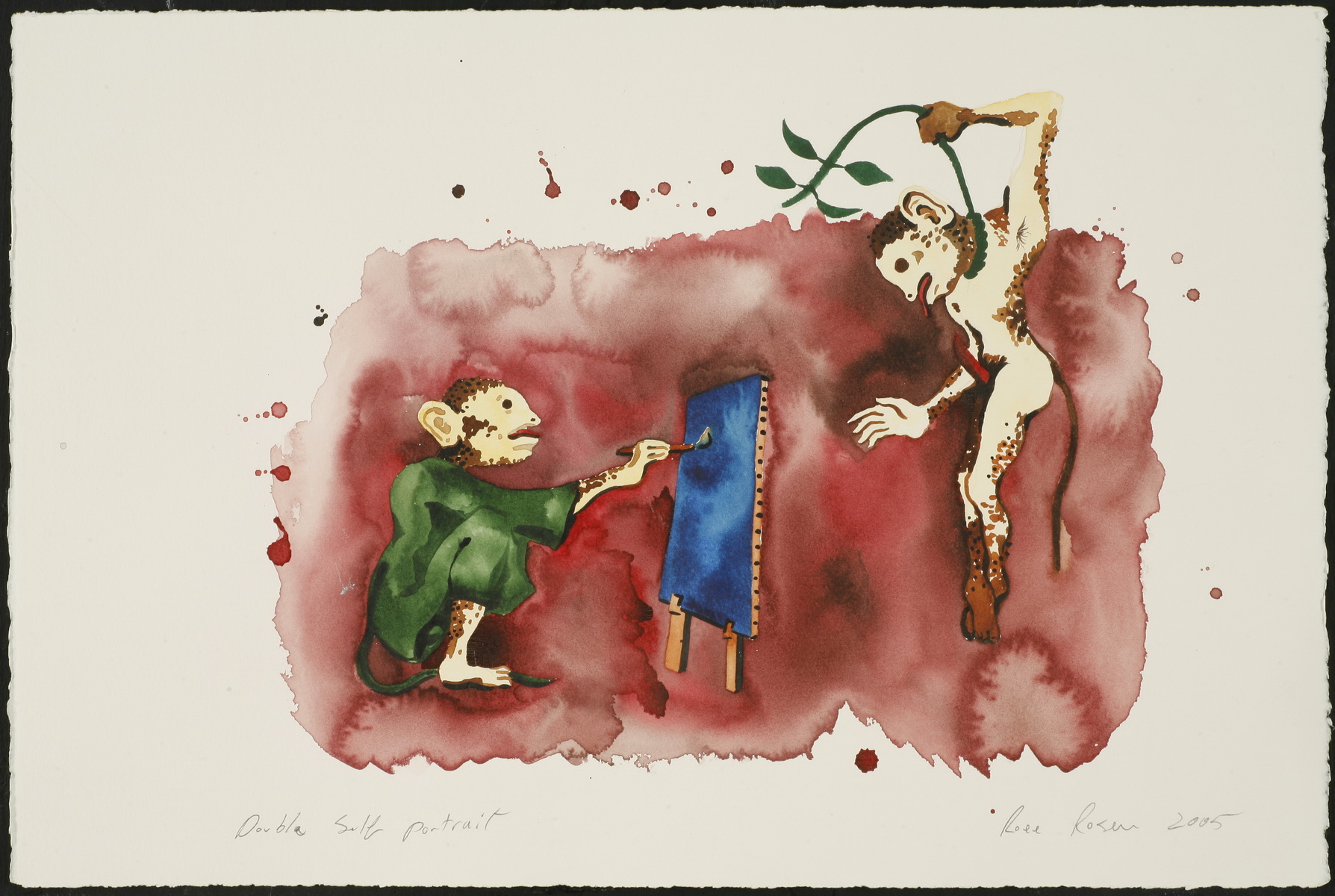The exhibition "More Love Hours than Can Ever Be Repaid" brings together works of artists from Israel of various generations, who have grown up at the virtual knee of the American artist Mike Kelley (1954-2012). Kelley is one of the most influential, distinctive, and trail-blazing artists the art world has ever known. His multi-faceted career stretched over four decades until it ended in a tragic suicide in January of 2012. Like a time bomb that keeps on ticking, his art continues to hit the nail on the head even after he has passed. The show "More Love Hours than Can Ever Be Repaid" is a first step in the attempt to track Kelley's huge influence on artists in Israel, from the 1990s until today, as well as the causes of his work's essential relevance to local art.
Kelley is perceived as a guru in the international as well as the local arenas; an artist worshiped by other artists. Crime, exploitation, oppression, a rotten bureaucratic apparatus, the abject, the uncanny and the subconscious are only a few of the topics catalogued in his universe. Trash, noise, high-school yearbooks, Catholic rituals, craft, cult, comics, music concerts, horror movies, porn magazines, burial customs, ghost stories, childhood toys – these were only some of the cultural products that had served as his inspiration. His works are confrontational and hair-raising, creating a strong parallel between administrative, educational, cultural, and religious mechanisms and suppressed memories and repressed desires.
Although Kelley's art has direct lineage in American culture, it has been adopted by many artists outside the US, including in Israel. In the local context, many artists view Kelley a major, admirable artist, a milestone in their art education. His radicalism, the subjects that interested him, and key works such as "More Love Hours than Can Ever Be Repaid" (to which the show's title is referring); "Heidi," a video work created in collaboration with Paul McCarthy; "The Poltergeist," a photography and text work created soon after completion of his studies; and later works like "Educational Complex" and "Day is Done" – all had significant influence on the formation of the language of local contemporary art.
This is particularly fascinating in light of the fact the very little of Kelley's work has ever been shown in Israel, and the artist had certainly not been physically present here or aware of his influence. Mike Kelley's art was incorporated into the theoretical and visual content of local art schools (in particular Bezalel and HaMidrasha) by respected teachers such as Roee Rosen, Ido Barel, and Uri Katzenstein, some of whom had seen it "live." They introduced it through slides, magazines, and other photographed and screened materials, and brought it to the pages of the important magazine "Studio," and, of course, to their art. The content and practices of Kelley's art were revelatory to many young artists in 1990s' Israel, a period characterized by both euphoria and crisis, alongside the rise of gender, societal, racial, and cultural groups that had previously been excluded from the conversation.
The "Kelley effect," if we may call it that, is used in this show as a study, artistic, educational, and cultural mechanism, unafraid to scratch silenced and repressed collective wounds. Like Kelley's oeuvre, the works in the show are characterized by a "socio-pathological" approach to everyday phenomena, rituals, materials, and objects. In general and in its details, the show follows the anti-heroic, critical spirit of the "Kelley effect,", seeking to refine it through local values that turn the gaze to the divided inner identity of this place, to the corrupt bureaucracy, to an unenlightened, racist society/culture, to a reality of violence and oppression, to social gaps, oppressive structures, and suppressed fears.


















